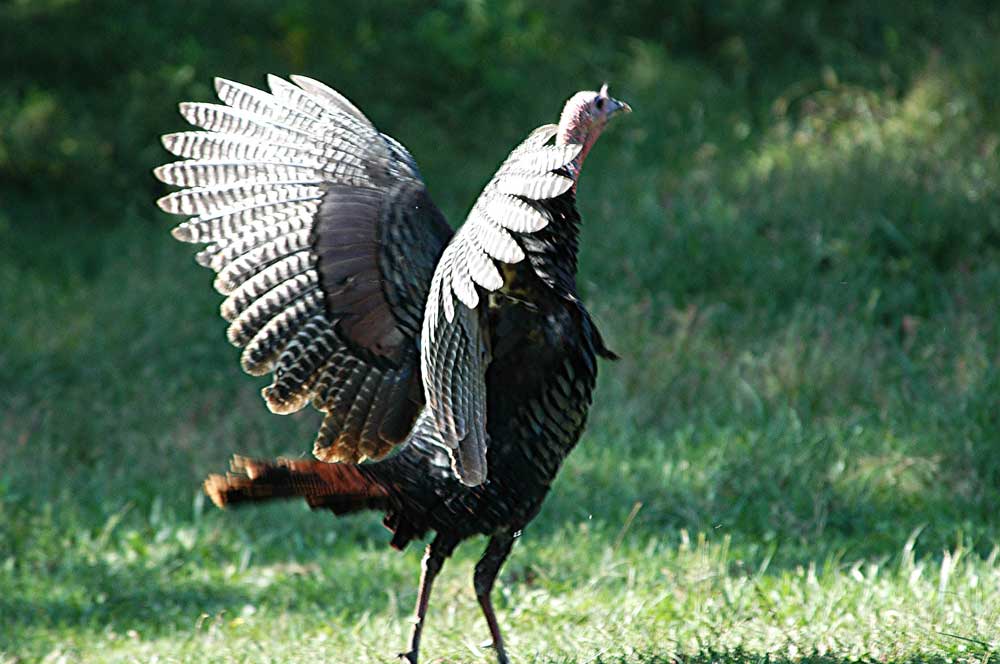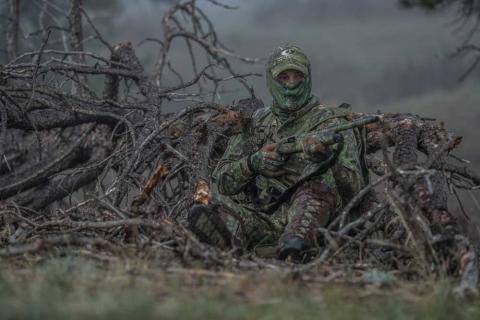provided by John Phillips
Will Primos of Flora, Mississippi, has been a Mossy Oak ProStaffer since the beginning of Mossy Oak nearly 35 years ago and is the creator of Primos Hunting.Will was in one of Toxey Haas’s first ads for Mossy Oak camouflage and probably has been wearing Mossy Oak camouflage longer than most anyone, except Toxey, the founder of Mossy Oak. Will Primos shares about what turkeys have taught him and the hunts from which he’s learned the most. Will has hunted all the species of turkeys in the U.S and Mexico and in just about all the states.

This turkey got his name because he roosted behind an old gentleman’s house in Copiah County, Mississippi. In that back fenced-in pasture, Mr. Lewis had chickens, a horse and a mule. I learned that if I yelped to Lewis, he’d walk into that pasture where the mule, the horse and the chickens stayed, because he could see all the way around the pasture. The animals inside the fence had eaten every blade of grass that was above the ground, so as soon as any grass appeared above the ground, Lewis would stand about 25-30 yards away from the horse and the mule. Once I started calling, the horse and the mule always stared directly at me. I think the horse and the mule were Lewis’s buddies. Lewis never had any hens with him, and once the horse and the mule stared at me, Lewis would leave quickly and never gobble another time.
I decided that if I was going to take Lewis I couldn’t call to him. On the day I finally took Lewis, he was gobbling before daylight. I snuck in as quietly as possible and got to within 40 yards of Lewis. You need to remember that because Lewis was in the top of the pine tree in that pasture, he could see daylight coming much earlier than I could on the ground. One reason I could get so close to Lewis was due to my going to him through a planted pine plantation. The soft pine needles kept me from making any noise when I stepped on them. I knew if I harvested Lewis I had to get very close to him and be within shotgun range of where he should land once he came out of the tree. This wasn’t the way I usually hunted turkeys. But then again, Lewis wasn’t a usual turkey. He was a smart, ole bird that had learned to read the body language of the mule and the horse in the pasture to stay out of the way of danger.
The pine tree where Lewis was roosting was about the size of my thigh. I got my gun up on my knee and waited for Lewis to make his next move. I only could see parts and pieces of Lewis as he continued to gobble his head off with almost every breath. Once Lewis decided to leave the limb, and he didn’t sail out of the tree like most gobblers do or fly out of the tree either. He jumped off the limb, landed right beside the tree – looking just like a helicopter. Lewis hit the ground about 10 yards off to the side of the tree. As soon as Lewis’s toes touched the ground, I shot him. I knew that was the only way I’d take Lewis. When I went to retrieve the gobbler, I saw he had 1-1/2-inch, very black spurs. He was a beautiful ole gobbler.
What Will Primos Learned from Lewis:
- You must figure out why a tom won’t come in to where you’re calling to take a bad turkey.
- Lewis taught me to watch the other critters in the pasture where he would come to every morning. I didn’t understand how Lewis knew that the horse and the mule were looking at me when I yelped. However, I thought perhaps it was because he’d seen hens in the pasture before and knew the mule and the horse didn’t stare at the hens like they did at me.
- You must get as close as possible to a gobbler like Lewis when he’s on the roost and just hope that once he comes out of the tree that he’s close enough for you to take a shot.
- You must realize that no matter what turkey calls you buy and how effective those calls are supposed to be, some turkeys won’t come to any type of turkey call, even the great ones like we offer at Primos Hunting. Some toms will walk or run away from a hunter who’s using a turkey call. So, that’s when you must try to determine what type of alternate tactic you can use to take that bird that’s been messing with your mind for several days.



























